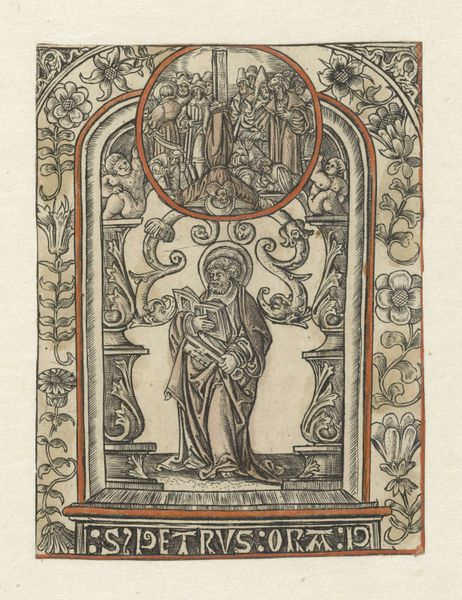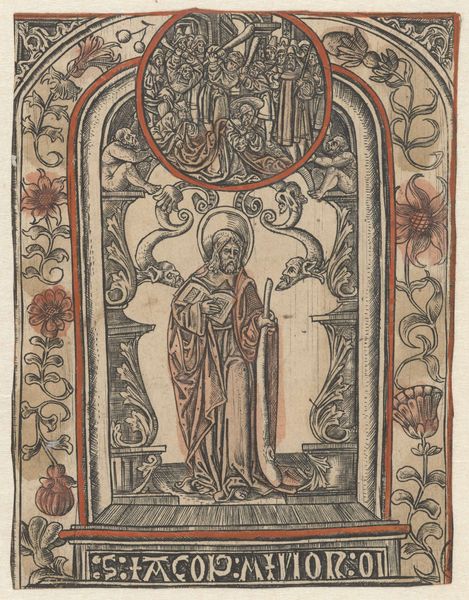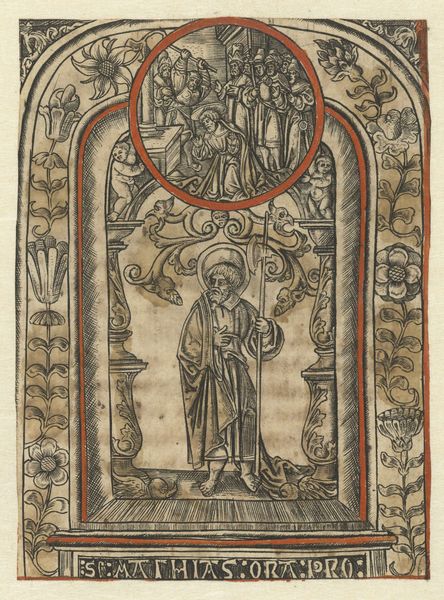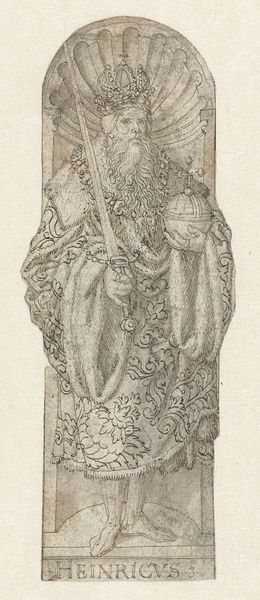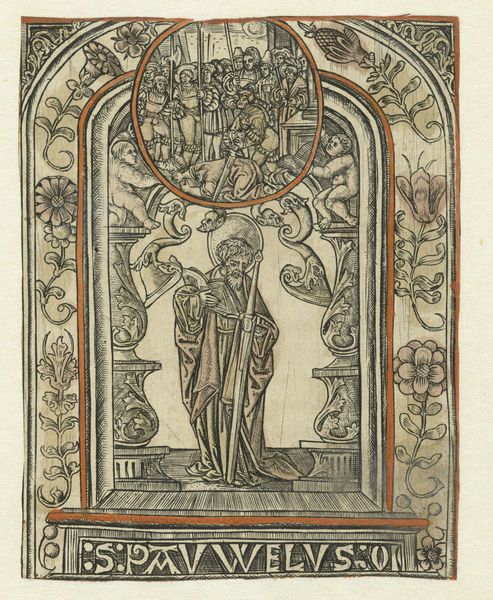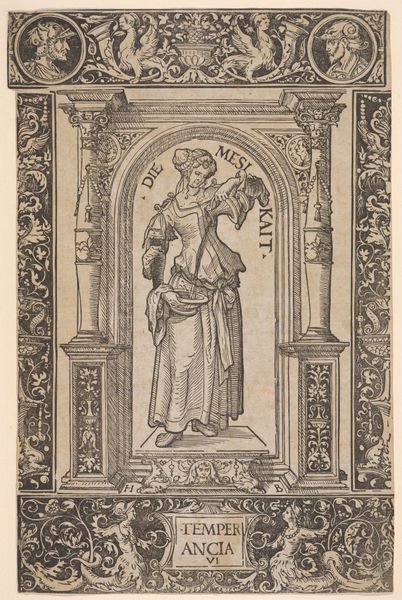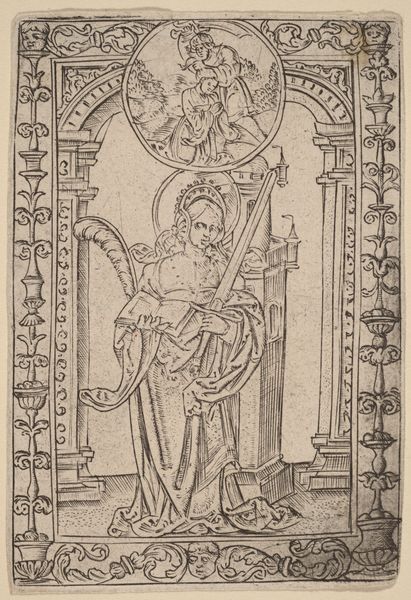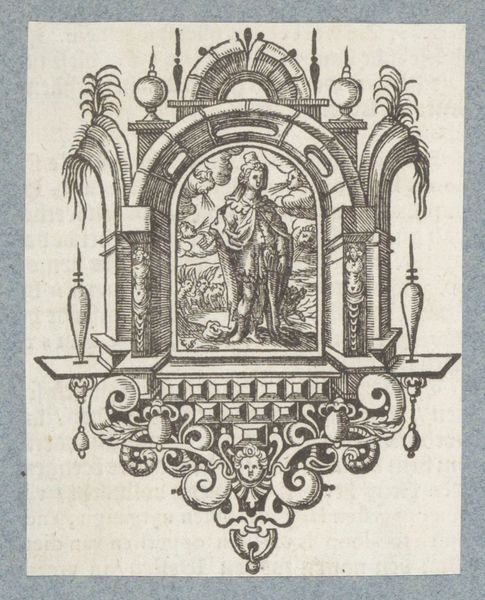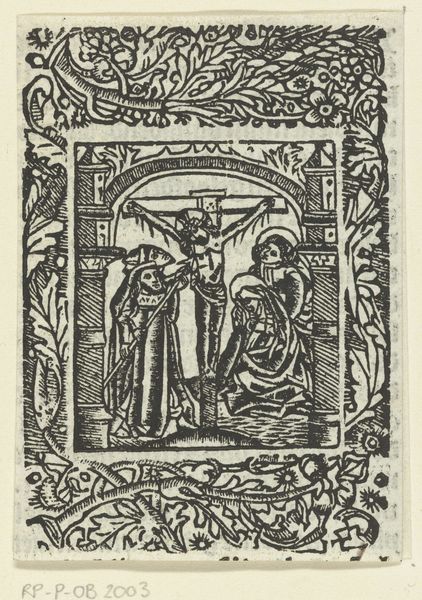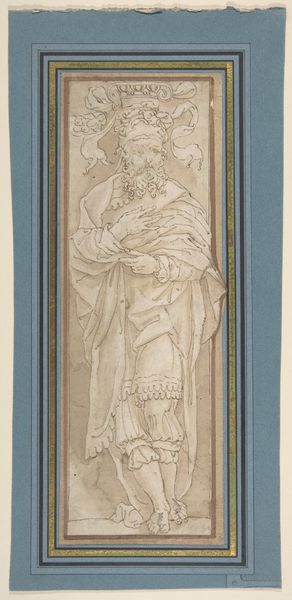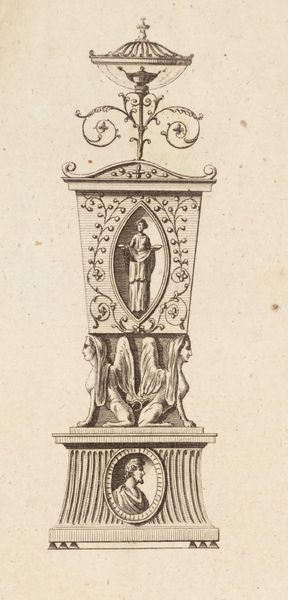
print, etching
# print
#
etching
#
figuration
#
romanesque
Dimensions: height 192 mm, width 131 mm
Copyright: Rijks Museum: Open Domain
Curator: At first glance, I see something reminiscent of medieval manuscript illumination. There’s a certain static quality to it, but also a quiet strength. Editor: This is "Triomferende Christus," by Arnoud Schaepkens, dating from 1831 to 1904. It's an etching, which immediately directs our attention to the process and materiality. Curator: Right, the medium itself, the etching, it allows for a very specific kind of detail and reproduction, suggesting mass consumption potential and questions about the democratisation of religious iconography during that period. How were these images distributed, and for whom? Editor: Precisely. The socio-political forces at the time heavily influenced the distribution of art and its subjects. This particular piece references Romanesque style; reviving it indicates a specific kind of cultural project underway. Curator: Absolutely. Think about the physical labor involved in creating the etching plate itself – the skill, the time invested. These details aren't simply reproduced, but activated with labor, giving it social weight. The content itself—Christ triumphant over the beasts—was disseminated, not just as image but with the material cost sunk into its means of manufacture and dispersal. Editor: It’s not just about individual artistry, is it? The church would commission or distribute such prints to communicate specific narratives of power. This triumph imagery would reinforce doctrine and shape public belief. Also consider the gallery. Who got access? What conversations emerged through these spaces? Curator: Indeed. Consider what an etching enables: the relatively inexpensive reproduction for, say, mass-produced holy cards. How would such affordability alter the religious experience? Editor: Excellent point. The materiality facilitated by the printing press is no less pertinent. By enabling wider circulation, how does Schaepken challenge traditional ideas around art’s auratic nature? Or does the deliberate echo of Romanesque styling further elevate this kind of production in opposition to merely craft activity? Curator: To sum it up, examining this etching draws into light the means of its production and opens a discussion of broader socio-economic trends connected with print and religious belief. Editor: This offers us an understanding into how powerful images such as "Triomferende Christus" shaped culture in the nineteenth century and still hold resonances today.
Comments
No comments
Be the first to comment and join the conversation on the ultimate creative platform.
